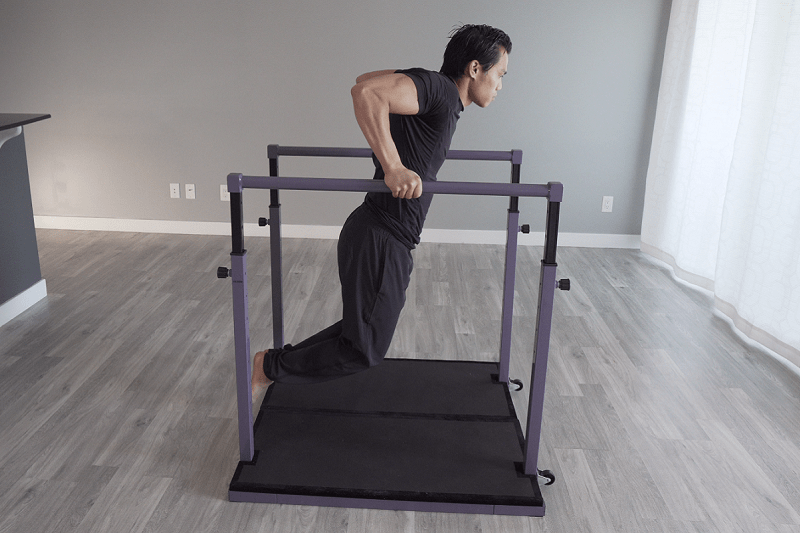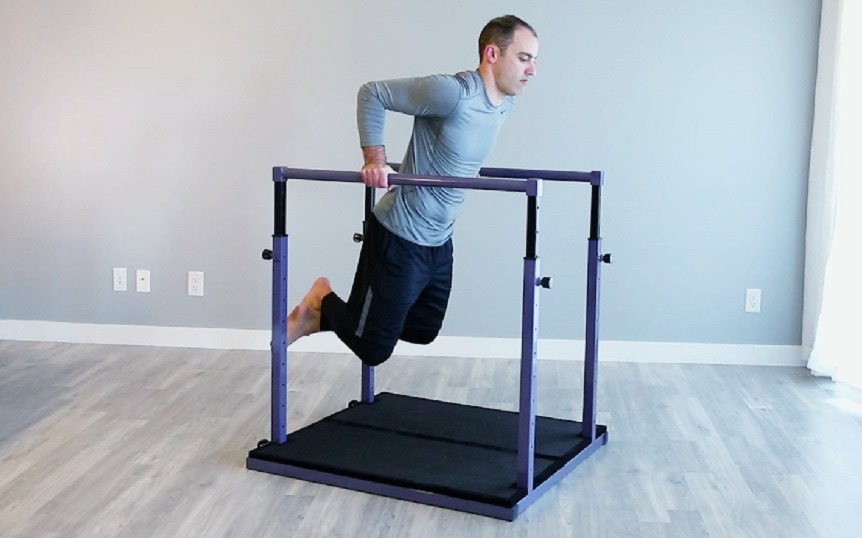
Why You Should do Parallel Bar Exercises
by: Admin

When you think parallel bars, you might immediately think of gymnasts.
But, whether you're working out at home or in a gym, and no matter what your goals are, you should consider doing parallel bar exercises. Parallel bars are amazing tools that allow you to use nothing but your bodyweight to make amazing strength and muscle gains, particularly in your core and upper body.
We love them because of how versatile they are, i.e. how much you can do and how many options you have. And, given the right set of parallel bars, there are many ways to modify the exercises to suit both beginner and advanced users.
Simply put, parallel bar exercises are fundamental to any well-balanced workout program because not only do they build muscle and strength, but they also teach you to master and take control of your bodyweight.
Here is a list of common parallel bar exercises and variations of each.
As a generalization, the double parallel bar variation is more advanced - you are required to lift and support your entire bodyweight.

First up are Dips.
Dips are a staple when it comes to bodyweight exercises. They are an unbelievably effective upper body exercise, which can be done on single or double parallel bars.
On a single bar, dips will primarily target you triceps (the backs of your upper arms). On double parallel bars, they will also target your shoulders and chest. Done right, they'll develop core strength as well.
Below I'll show you both single and double bar variations in order of difficulty.
There are a few things to note:
Next up are Inverted Rows.
Inverted Rows simply don't get the credit they deserve and should be a staple when it comes to bodyweight exercises. Like Dips, they are an unbelievably effective upper body exercise, which can be done on single or double parallel bars.
Inverted Rows will primarily target your upper back and biceps (the fronts of your upper arms). Done right, they'll develop core strength as well.
Below I'll show you both single and double bar variations (again in order of difficulty) - can you guess why they are called "Inverted Rows"?
There are a few things to note:
And finally, we have one of my favorite exercises, Knee Raises. Without question, Knee Raises are one of the most effective exercises for developing core strength and core muscles.
Unlike Dips and Inverted Rows, Knee Raises have to be done on double parallel bars. But don't be discouraged, give it a try. You might just surprise yourself. Many of my clients never thought they could... until they did!
Below I'll show you Knee Raises and a slightly more difficult variation, Leg Raises.
ere are a few things to note:
And finally, we have one of my favorite exercises, Knee Raises. Without question, Knee Raises are one of the most effective exercises for developing core strength and core muscles.
Unlike Dips and Inverted Rows, Knee Raises have to be done on double parallel bars. But don't be discouraged, give it a try. You might just surprise yourself. Many of my clients never thought they could... until they did!
Below I'll show you Knee Raises and a slightly more difficult variation, Leg Raises.
___
If you can't already tell, I have a certain love for parallel bars. They are tough but rewarding. And, regardless of how much exercise experience you have, you will find parallel bar exercises that will challenge and take you to the next level.
Here are a few final things to note for your absolute safety when using parallel bars:
In my opinion, when you pair parallel bars and resistance bands, you've got the perfect combination to achieve any goals you may have.
Interested in resistance bands, but are unsure as to their benefits? Check out our blog on Resistance Bands vs. Free Weights.